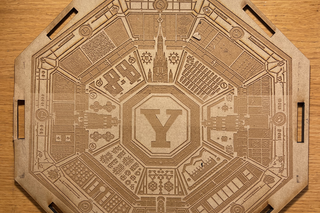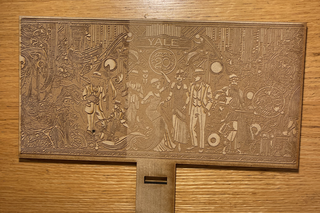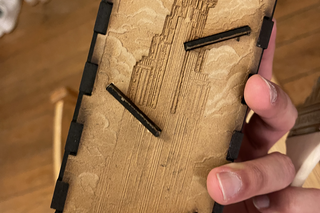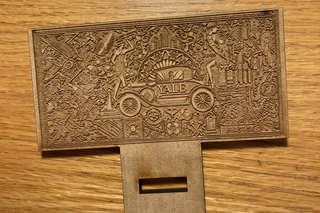Roaring 20s & Deco Dice Delight: A Gatsby's Roll with a King Kong Twist
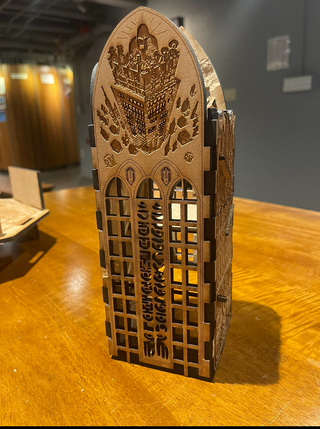
Experience the opulent Roaring 20s with a twist as King Kong towers over the metropolis skyline in this Art Deco-themed dice tower, blending elegance with thrilling chaos!
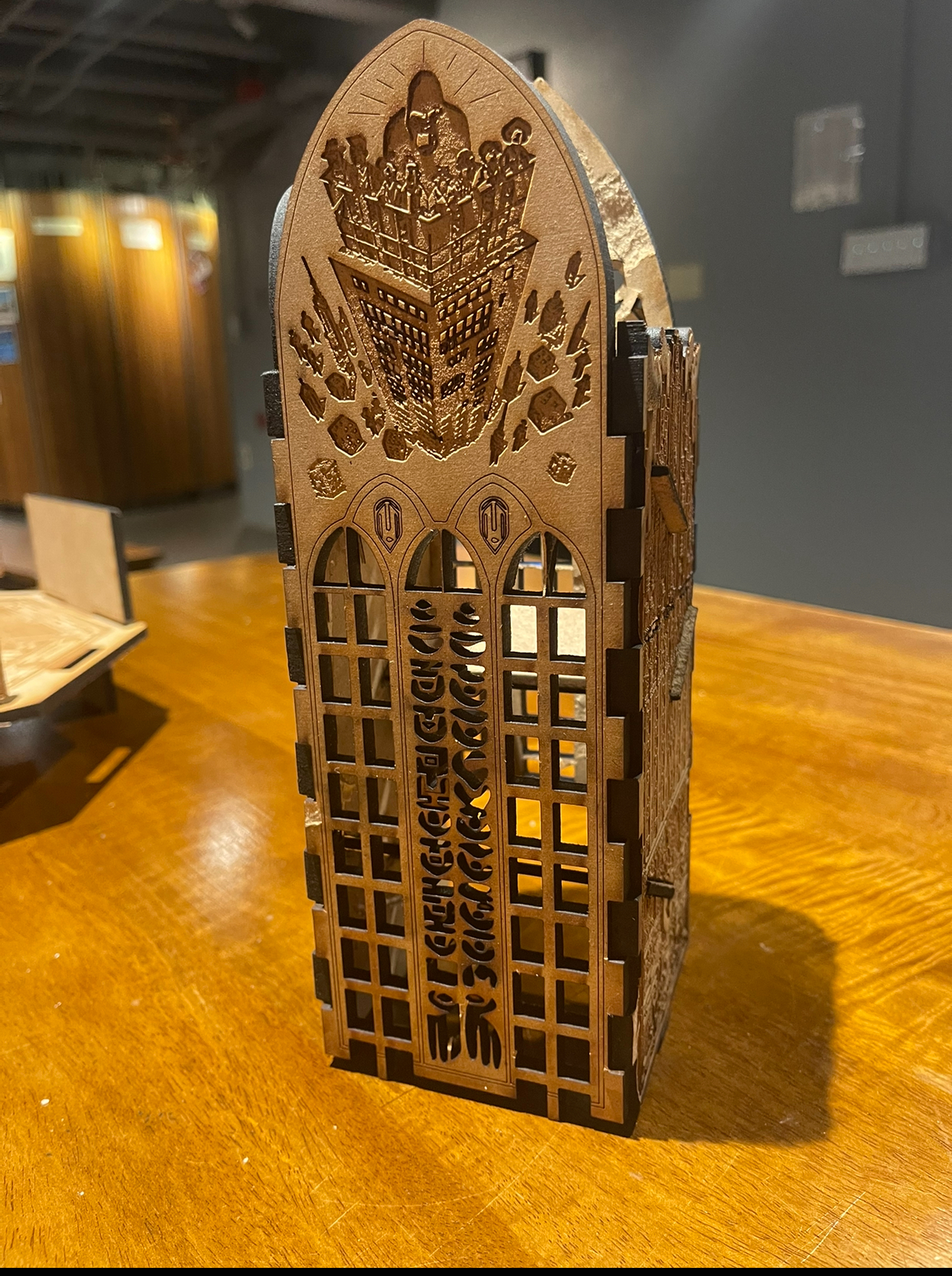
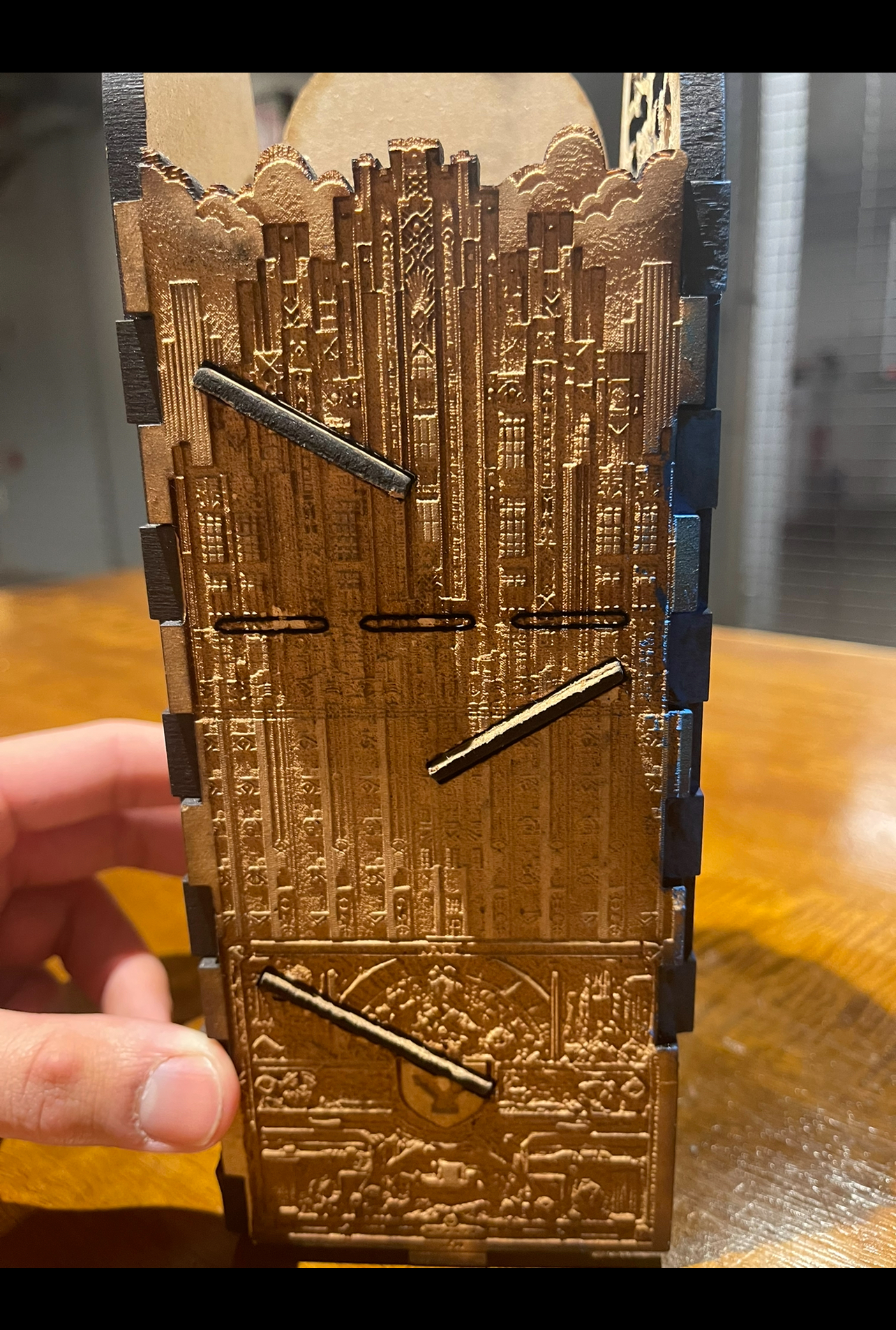
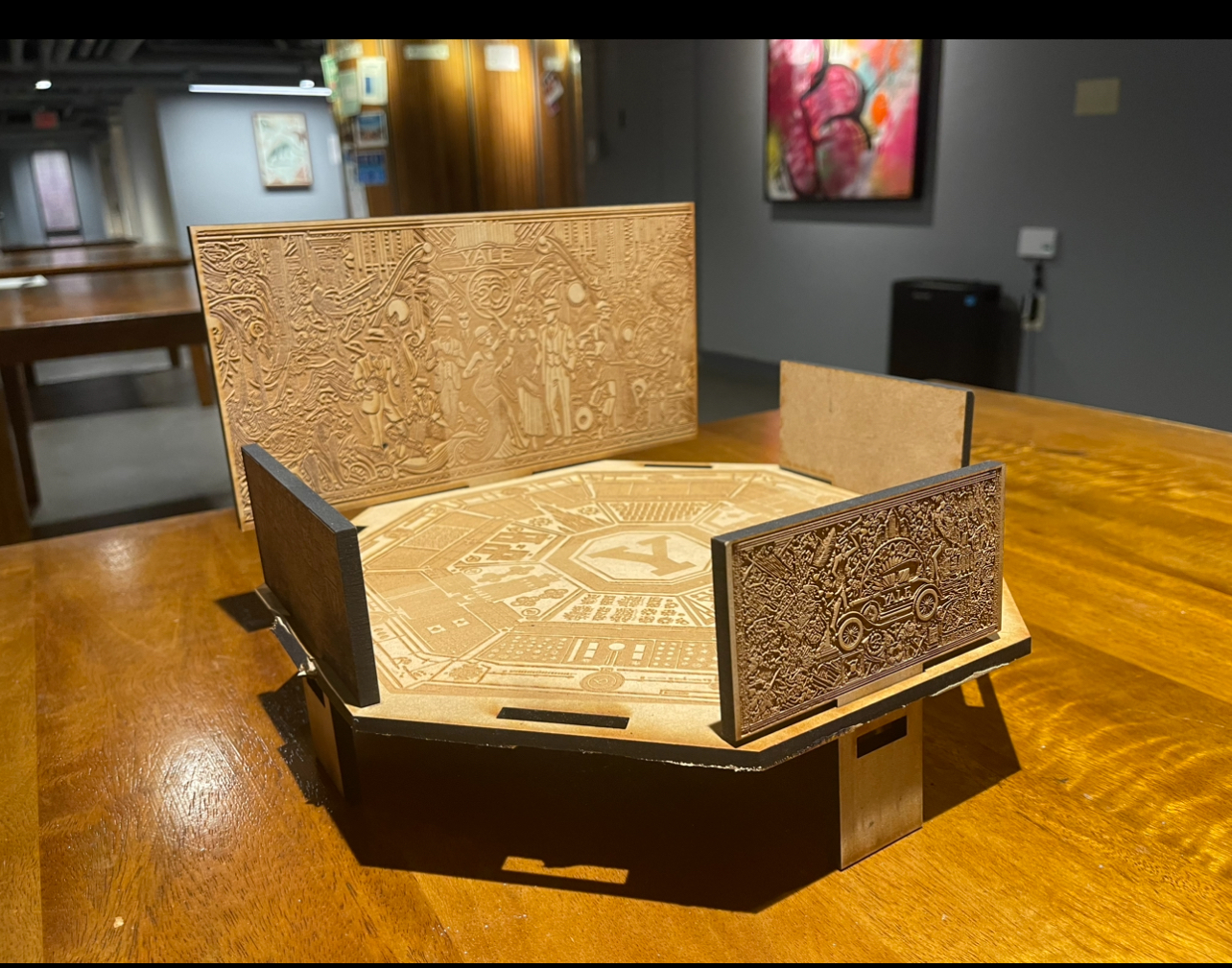
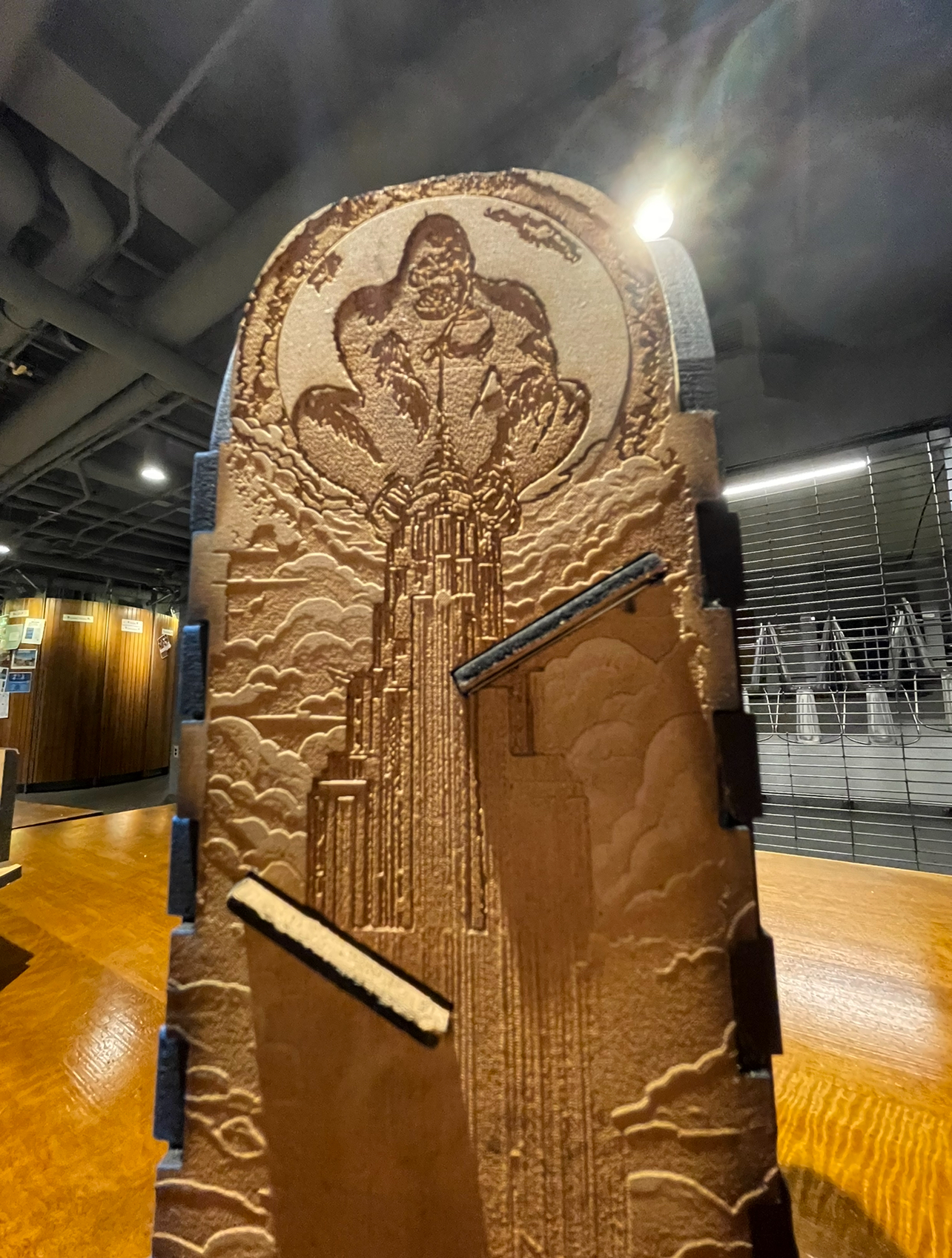
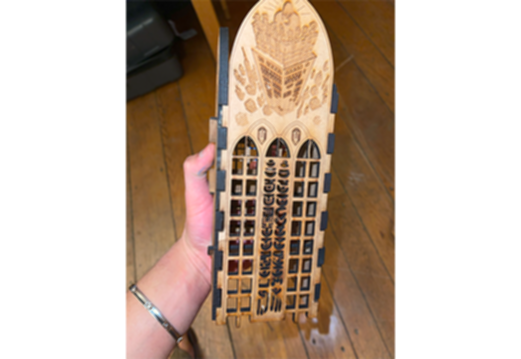
In conceptualizing and designing my dice tower, I embarked on a journey through time and culture, drawing inspiration from a myriad of captivating themes: Yale’s legacy, the exuberance of the Roaring Twenties, the unpredictability (and appeal) of dice, the elegance of Art Deco, and the imaginative worlds of retro and futurism. My fascination with this era stems from its rich tapestry of history, innovation, and cultural dynamism, each element intertwined to create a narrative that transcends time.
As I delved into the design process, I sought to encapsulate the essence of each theme within the confines of the dice tower. At the heart of the design lies Yale University, an institution steeped in tradition. I envisioned the tower as a tribute to Yale’s storied past, incorporating iconic symbols such as the university crest and architectural motifs into the intricate engravings adorning its exterior.
The Roaring Twenties offered a glimpse into a bygone era of decadence and revelry, characterized by jazz, flapper fashion, and Art Deco aesthetics. Drawing from this vivacious energy, I infused the design with geometric patterns and sleek lines reminiscent of Art Deco architecture, creating a visual feast for the senses.
However, it was the incorporation of laser engravings and designs using the laser cutter that I believe truly elevated the project. With painstaking attention to detail, I sought to transform the surface of the dice tower into a work of art, intricately etching symbols of luck, prosperity, and adventure. From ornate dice patterns to stylized representations of iconic landmarks, every engraving told a story of the era’s grandeur and allure.
Despite the challenges of time and complexity (many attempts, with different materials/thicknesses and different designs, a relatively slow laser cutting process when it comes to engravings, etc.), maintaining a modular design was paramount. The versatility of the dice tower, with its detachable components and interchangeable panels, ensured both functionality and aesthetic appeal. While the process may have taken longer than anticipated, the end result was a testament to my unwavering dedication to capturing the spirit of the Roaring 20s in every aspect of the design.
In essence, this dice tower stands as a tribute to an era of unparalleled creativity and innovation, where the boundaries between past, present, and future blur, and where the thrill of the dice roll echoes through the corridors of time.
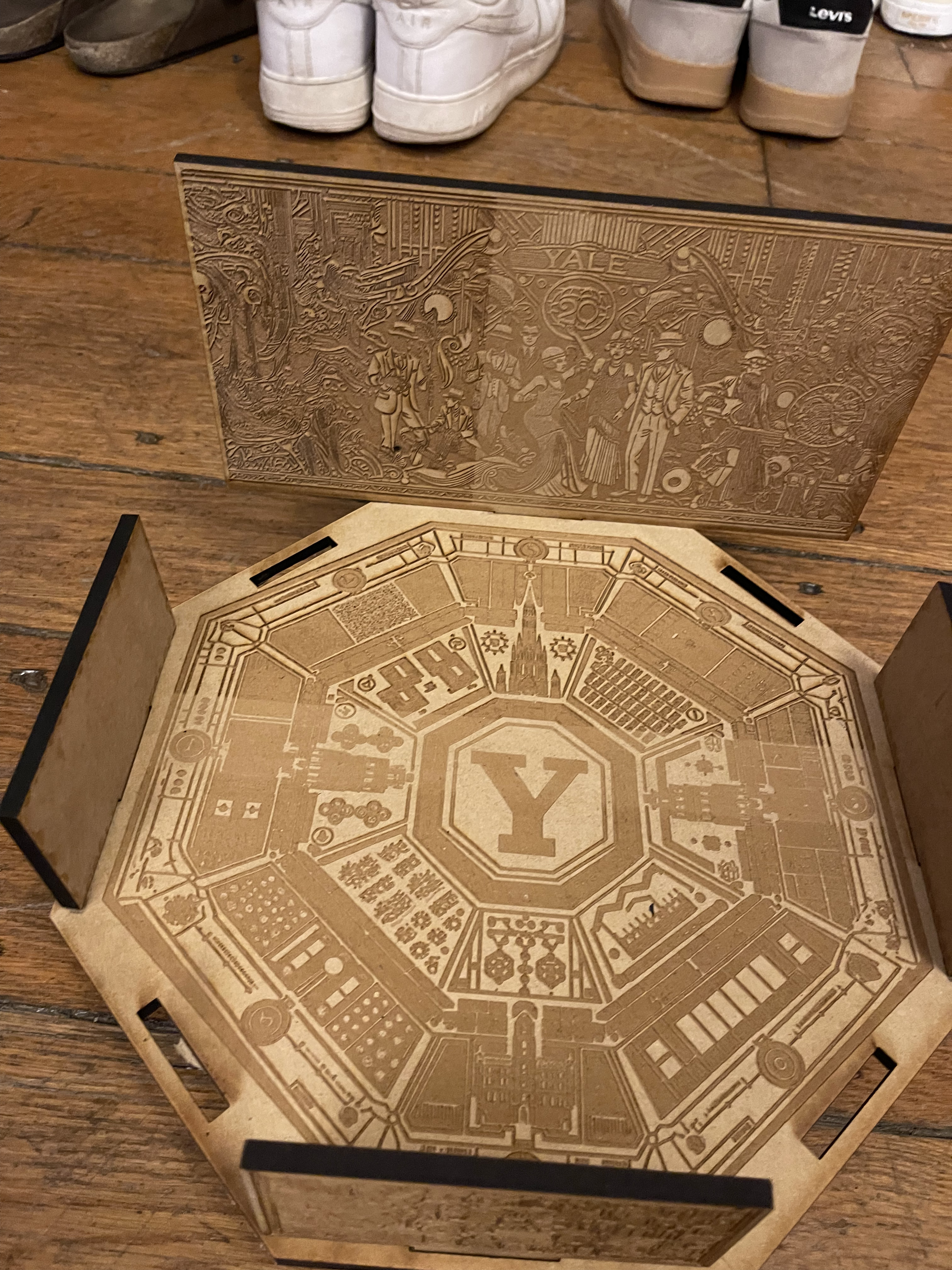
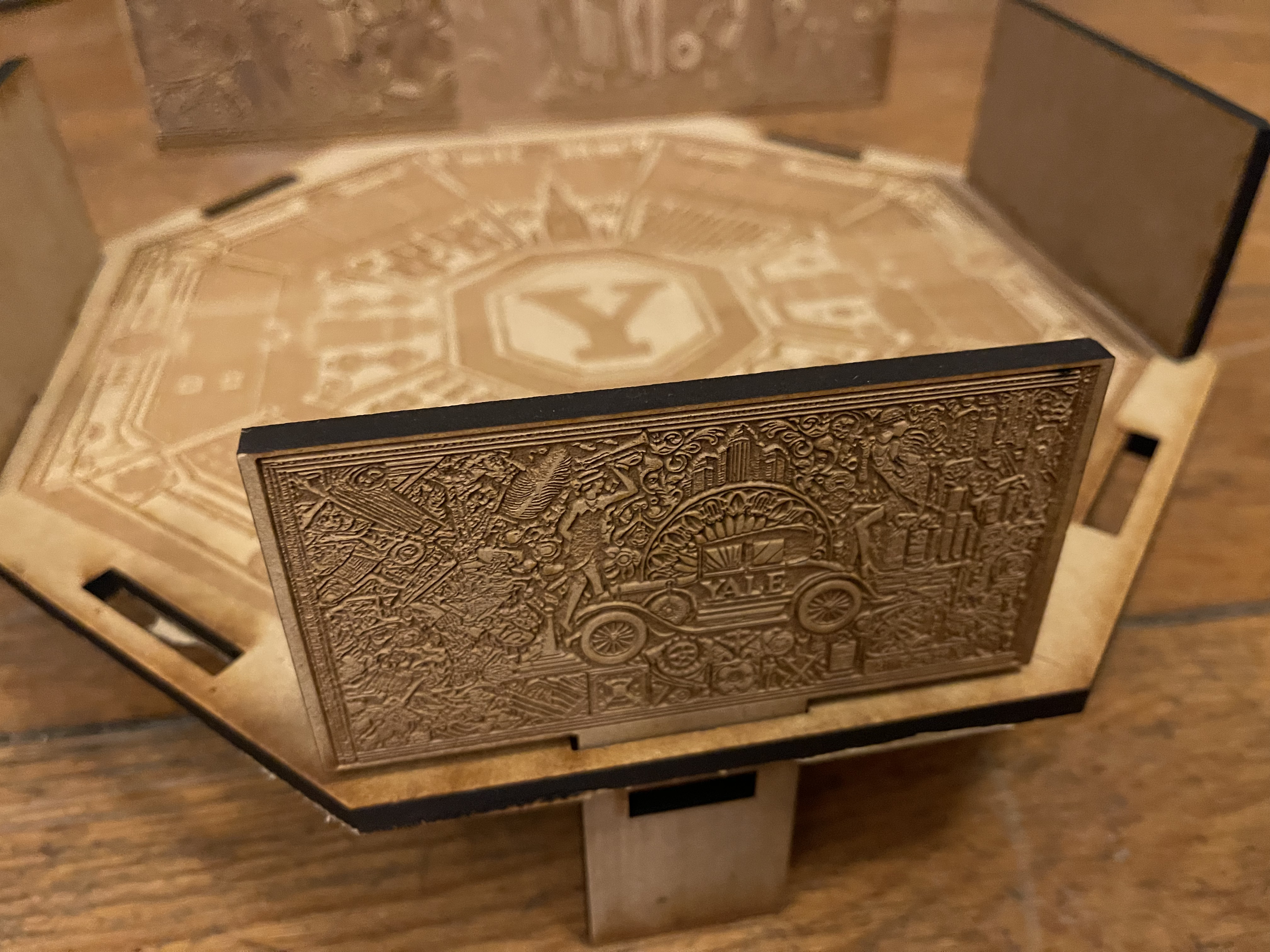

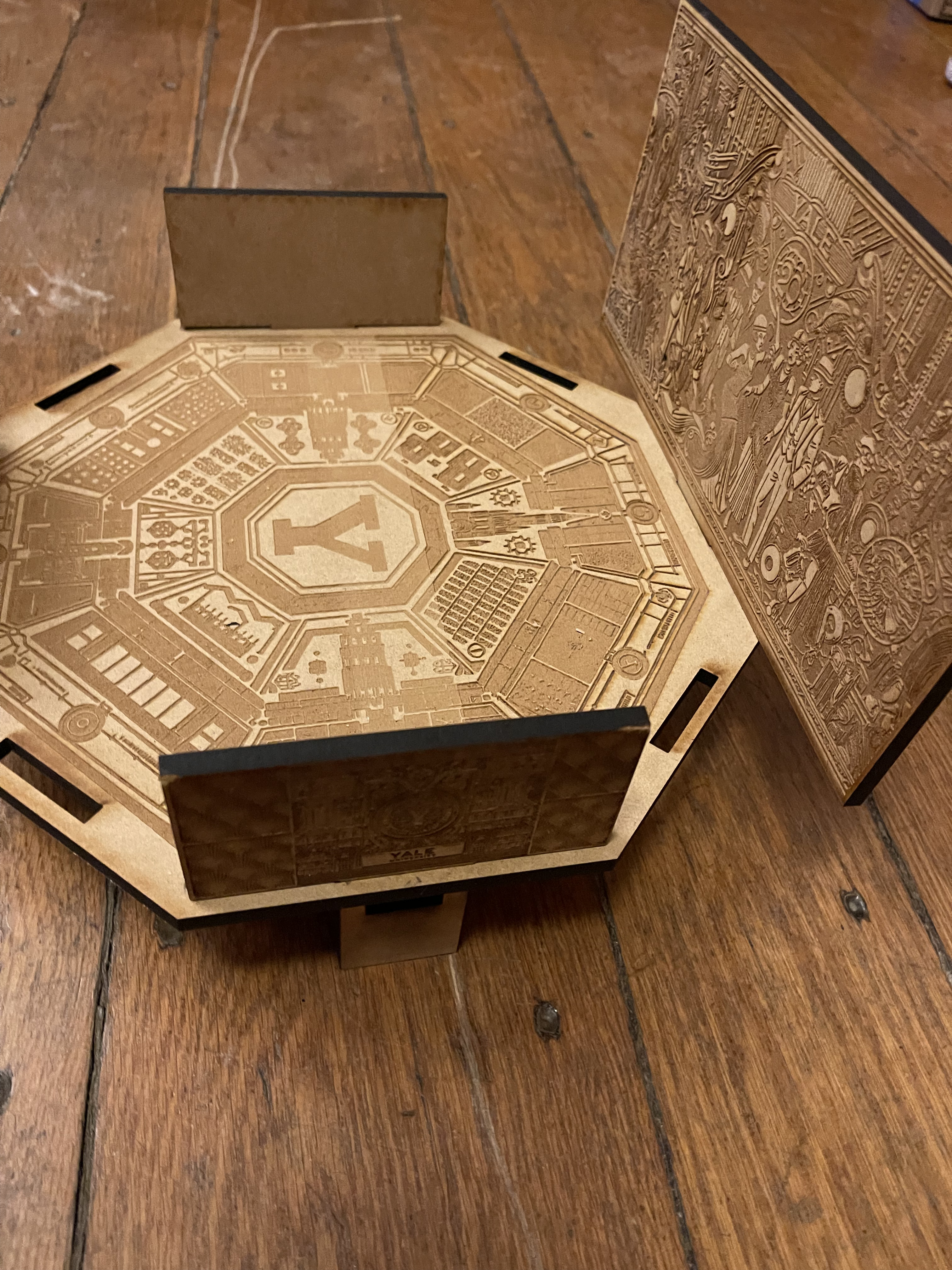
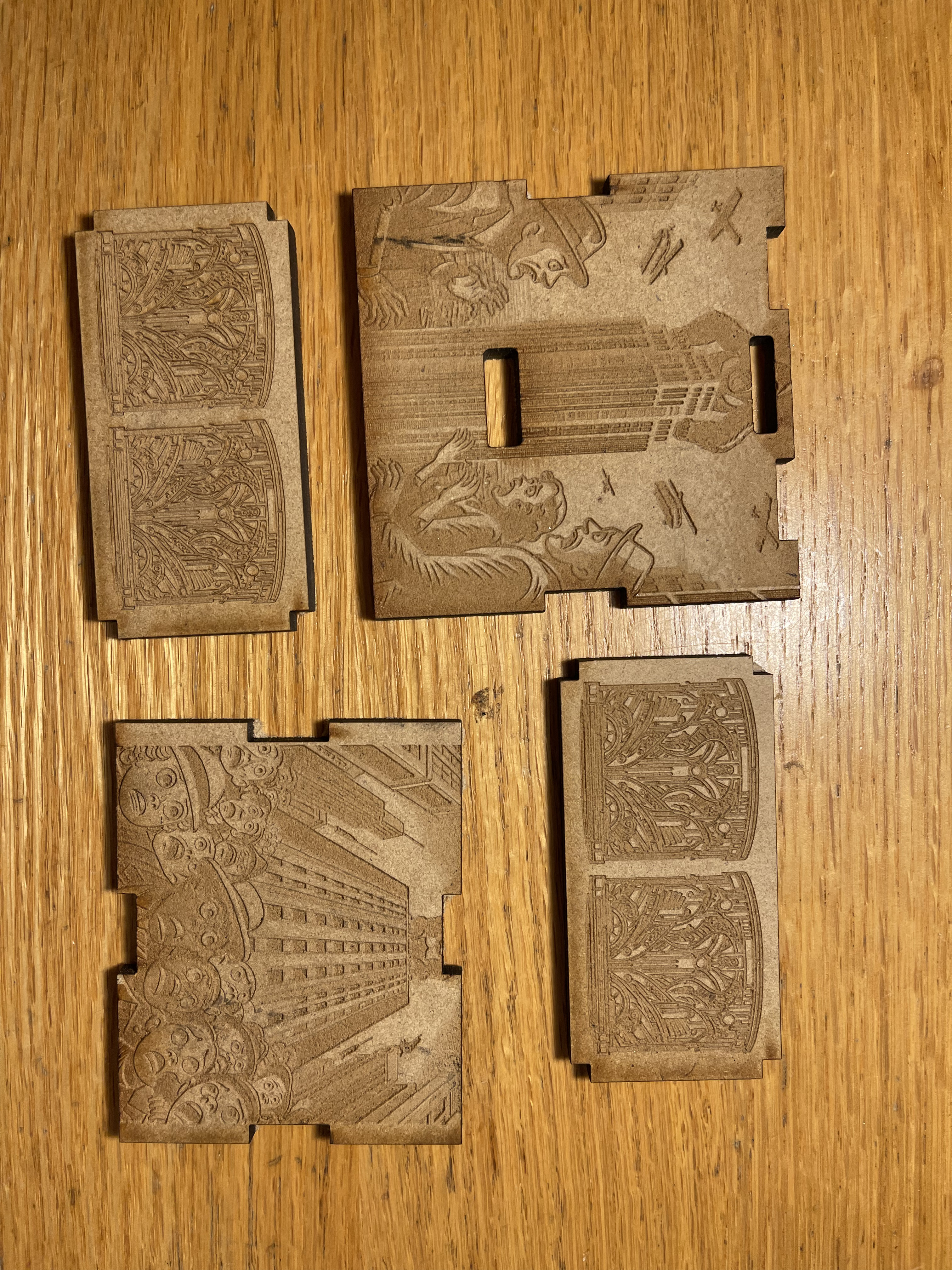
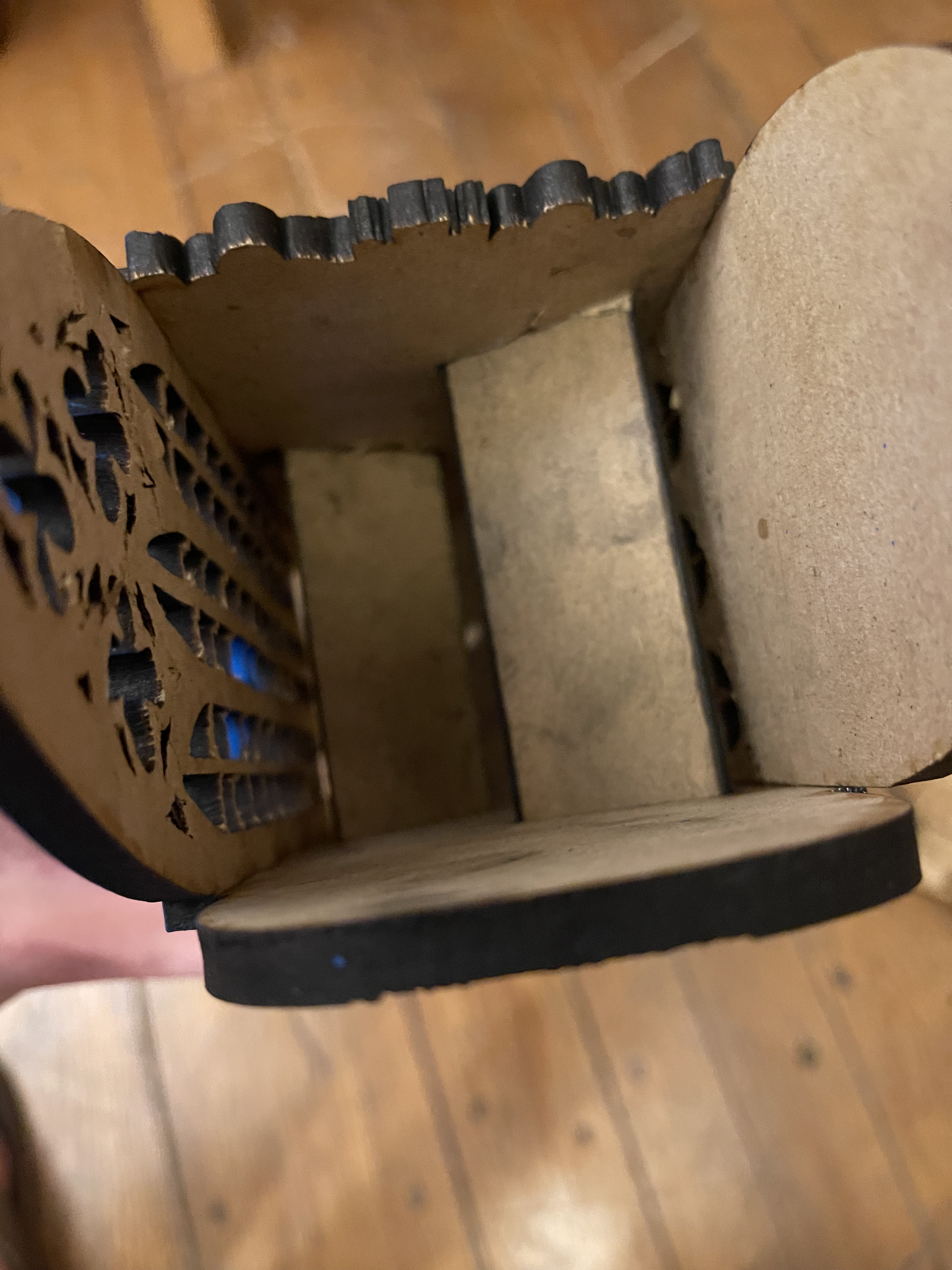
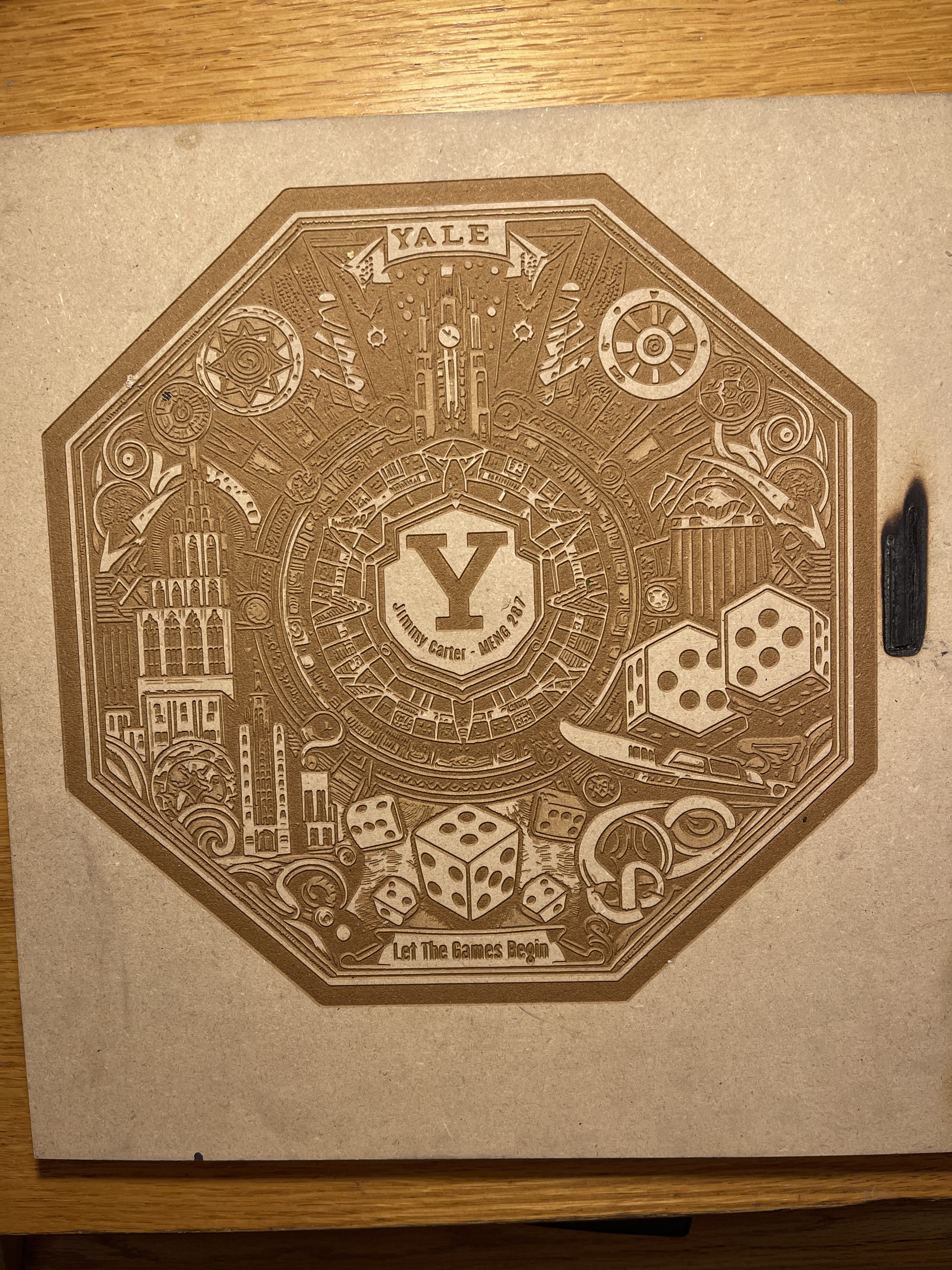
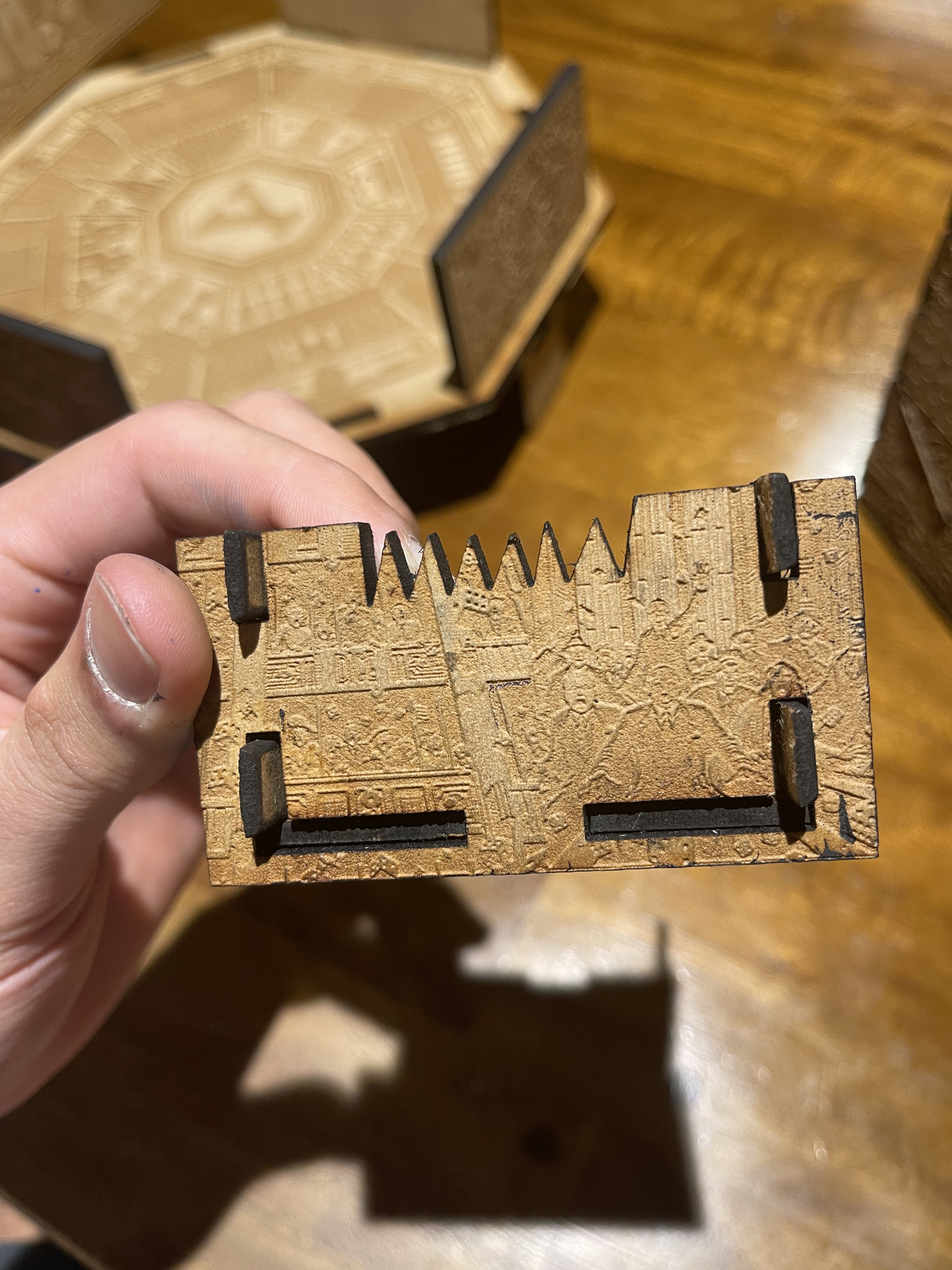
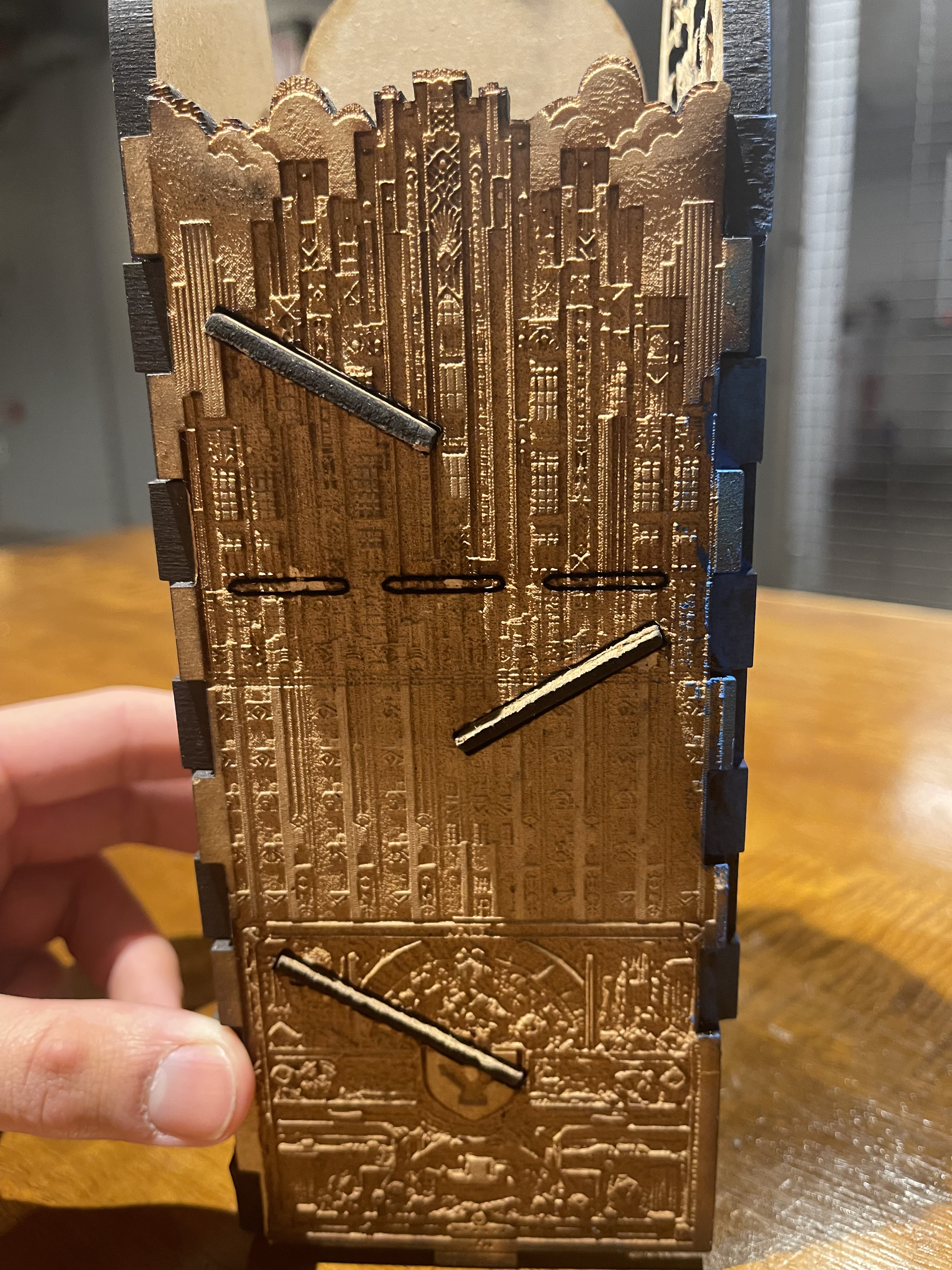
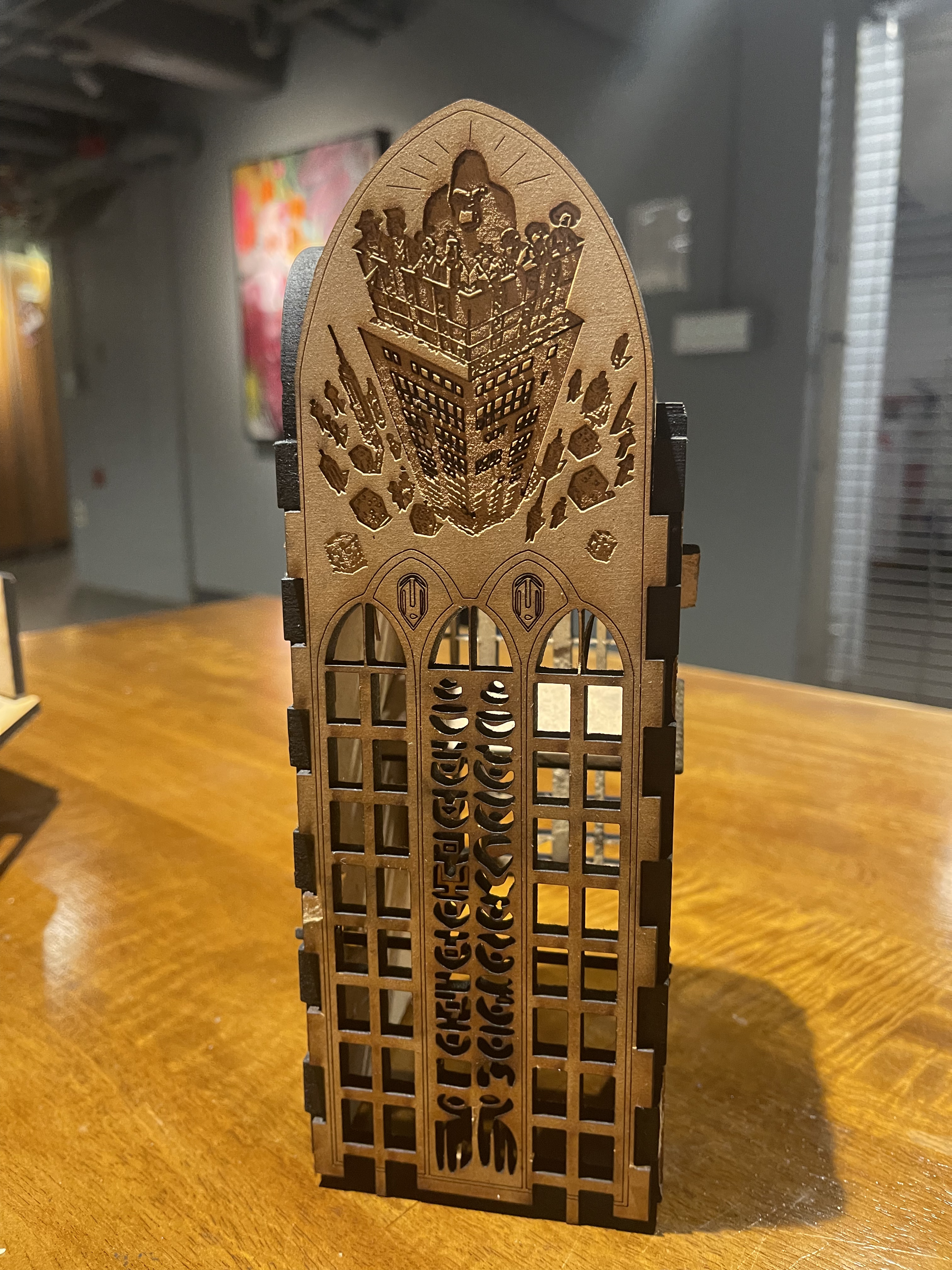
Brief walkaround/showcase of the Magnificent Roaring 20s King-Kong-Attack Dice Tower
Illustrator Designs – Before the laser cutting process
When crafting this project, I embarked on a digital quest to curate a collection of patterns, images, and designs that resonated with the themes of Yale, the Roaring Twenties, Art Deco, and retro futurism. While I found quite a few compelling assets online, I also felt compelled to inject my own creativity into the mix. I ended up designing (in vector format, using Illustrator) a solid chunk of the designs, while refitting some others and recycling certain patterns I had found online.
Using Photoshop and Illustrator, I navigated the process of transforming these ‘raw materials’ into cohesive elements for the dice tower. With Photoshop then Illustrator, I converted raster images into vector format, ensuring scalability and crispness for laser cutting. This involved precise tracing and refinement to maintain fidelity to the original designs.
In Illustrator, I seized the opportunity to draw and explore designs, generating patterns and motifs inspired by the aesthetics of the Roaring Twenties and Art Deco era. This phase of the process was iterative, characterized by experimentation and refinement as I honed in on the desired aesthetic.
Throughout the journey, I remained vigilant in harmonizing the disparate elements into a cohesive whole. Some designs required subtle adjustments to align with the overarching vision, while others underwent significant transformations to achieve the desired effect.
The culmination of this endeavor was a collection of designs that seamlessly blended external inspirations with my own creative contributions.
In the creation of the Roaring 20s King-Kong’d dice tower, I harnessed the power of parametric modeling techniques and constraints within SolidWorks to design the primary structural components. By leveraging parametric modeling, I ensured that the dimensions and features of each part could be easily adjusted and modified, allowing for seamless integration and assembly. Additionally, I accounted for kerf – the width of the laser beam – to ensure precise cuts during fabrication.
However, when it came to adding intricate ornaments and artistic details, I found that Photoshop and Illustrator offered a more intuitive and flexible platform. While SolidWorks is OK in engineering applications, its interface and tools are not as conducive to artistic exploration (…at all). Features like a clumsy and messy undo function and a lack of true revision history definitely hindered my creative experimentations, quickly prompting me migrate to the Adobe CC Suite for these details. Additionally, the absence of true free-form drawing capabilities limited my ability to create organic shapes and intricate patterns.
By combining the precision of SolidWorks with the artistic freedom of Photoshop and Illustrator, I was able to achieve a balance between form and function, resulting in a dice tower that integrates structural integrity with some level of ornamental beauty.
